Canada’s banking regulator has proposed changes that would strengthen the stress test applied to uninsured mortgages.
The Office of the Superintendent of Financial Institutions (OSFI) unveiled its proposed changes on Thursday, which would require borrowers applying for uninsured mortgages—typically those with more than a 20% down payment—to qualify at their mortgage contract rate plus two percentage points or 5.25%, whichever is higher.
The stress test currently has a minimum qualifying rate of 4.79%, nearly 50 basis points lower.
Additionally, OSFI said it plans to “revisit the calibration of the qualifying rate at least once a year to ensure it remains appropriate for the risks in the environment.”
OSFI Superintendent Jeremy Rudin said the higher floor rate is based on an average of the qualifying rate in the preceding 12 months leading up to the pandemic, adding that financial markets must be prepared for a return to pre-pandemic conditions—i.e., higher interest rates.
“The main thing we have to be ready for is an increase in mortgage rates to the pre-pandemic range,” he told reporters. “We have interest rates that are extraordinarily low, even by recent standards.”
He added that the regulator is concerned about market conditions, which elicited this warning to lenders in OSFI’s statement: “OSFI will be looking for heightened vigilance from FRFI lenders in applying the principles of Guideline B-20 related to collateral management, income verification and debt servicing, combined Mortgage-HELOC loan plans and risk governance.”
“Rather than waiting to see any kind of deterioration in underwriting practices, we’re proactively out there reminding lenders that even in these conditions, the principles that we elucidated in B-20 are very important and that we’re going to be looking closely to see that they’re being respected,” Rudin said.
Reaction to the Proposed Changes
Reaction to OSFI’s announcement was swift, with some saying the increased minimum stress test went too far, while others said it didn’t go far enough.
“Increasing the qualifying rate by another almost 50 basis points will only serve to disqualify more aspiring middle-class Canadians and would-be first-time buyers,” Paul Taylor, President and CEO of Mortgage Professionals Canada told CMT. “While 46 basis points isn’t a tremendous difference, philosophically, we’re continuing with a structure that exacerbates the wealth gap and makes it even more difficult for those without a bank of mom and dad to rely upon to own a home.”
It’s estimated that this proposal would reduce purchasing power for uninsured borrowers by between 4% and 4.5%.
“The maximum amount that can be borrowed under the new rule would decrease by 4.5% (from $442K to $422K for a median-income household),” National Bank economists wrote. In comparison, they noted that the B-20 stress test implemented in January 2019 requiring homebuyers to qualify at the higher of either the 5-year posted rate or the contractual rate plus 200 basis points reduced purchasing power by 22%.
“Though the new measure is a step in the right direction for financial stability, we doubt this alone will significantly cool the housing market,” they wrote.
Still, some see the increase in the stress test’s floor rate as overreach, considering it is already about 300 basis points above some of the lowest uninsured mortgage rates still available today (and even more so for variable rates).
“I am struggling to see how this can be justified as a prudential regulatory measure. Prior to today, the hurdle rate used in the stress test was already far in excess of any credible scenarios for future market interest rates,” Will Dunning, MPC’s Chief Economist told CMT.
“As I commented recently, official data from the Bank of Canada shows that the highest actual average lending rate seen since the start of 2013 is 3.76%. This seems to me to be a reasonable interest rate to use in pursuit of prudent regulation.”
Dunning added that the stress test fails to take into consideration two key factors that will reduce the impacts of higher rates at the time of future mortgage renewals: “Repayment of mortgage principal will be more rapid than is implicitly assumed by the stress tests; secondly, borrowers will experience income growth.”
There’s no word yet if changes to the insured mortgage stress test will be forthcoming as well. But the Minister of Finance, who oversees the stress test applied to insured mortgages, said this: “We will continue to monitor housing market conditions across the country. To inform potential steps the government may take, we will closely examine the results of the consultation announced by the Superintendent of Financial Institutions.”
The public is invited to provide feedback to OSFI via B.20@osfi-bsif.gc.ca, which will be accepted up to May 7, 2021. OSFI will then communicate some of that feedback and any final amendments to the qualifying rate by May 24, 2021, prior to the new stress test taking effect on June 1, 2021.








I believe this is a mistake, the housing market is being fueled by realtors. There should be more regulation on realtors and how they conduct purchase business. They have pushed higher bids with the practice of blind bids. I have seen this for mayself. Why don’t they have an auction or open bid practice, This would slow the the rapid increases in the housing market. As well as firm offers should be eliminated unless you have cash to buy the home with no mortgage. We should have a minimum 5 day condition on every purchase. Try this first prior to increasing the stress test. They will be eliminating a lot of individuals from purchasing a home.
Thank you!! I’m a Realtor and I completely agree with you. There needs to be changes to how Real Estate is traded. That would definitely have an impact on the insanity of the market right now. Properties should not be listed so far below their current value that 50 offers come in on one property. That is misleading to every Buyer out there. And yes, offers should be open for everyone to see so Buyers can make an educated decision on what price to offer on a property rather than a complete guess. As well, if there is going to be an offer date set then it should be mandatory for Sellers to have a home inspection done prior to the offer date. Buyers shouldn’t have to put in an offer without a condition of an inspection if there is no inspection.
I am totally with you Frank. There are a lot of good realtors, unfortunately, most are not. If we change the practice as you suggestd, it will make it a more balanced market.
To increase the Qualifying Rate is to discourage the first time home-buyers, which is against our tradition of Canadian homeownership pride. Why not increase the the capital gain tax for investors, especailly foreign investors, and new tax for people who do the flips? This will give more tax to the Government, which we need due to QE of printing money, yet, Qualifying rate remains the same.
Michael
I’m a real estate agent myself, and I’ve been in the business for 26 years. I’ve been involved in land, developments, residential and work with international investors. I feel something needs to be done to protect people from having to deal with all cash offers, Buyers are almost forced to buy without any subjects, just to get the home. I don’t feel this should be continued, if a buyer has the cash fine, however to go with a subject free offer when the buyer is still getting a mortgage…might need to be stopped.
I do feel as realtors we are part of the problem…when showings are set up for only 2-3 days then offers set on a certain date which is usually just after the showing dates….it creates that urgency and push for the multiple offers…however the issue is this…the Sellers see all other people doing this and expect you as there agent to do the same.
The issue of supply and demand has been upon us for many years, we in fact have had a housing crisis for many years, especially affordable housing. The wages here do not increase like our real estate prices or our rental payments. It might be an idea for the Government to do something about wage increases, real estate isn’t the only thing that has gone way up in price…go buy some groceries..look at that little bag for $100 dollars that gets your family one meal plus some toilet paper…
We also lack properties to sell in relation to the high numbers of buyers in our market..our Government announced last October they want 1.2 million immigrants to come into Canada this year. This will put more pressure on our housing, it might be an idea to look at applying more tax there or more rules on how much immigrants can buy.
However, to stay on topic, real estate provides all kinds of jobs and brings in a ton of tax money too. Think of how many trades and other professionals are in business because of real estate. The list is long and if you sit down and think about how many types of professionals and trades in the different fields you will be surprised. Builders, trades people, truck drivers, machine operators, accountants, shipping, international trade on building supplies, landscapers, city hall workers, mayors for all the different cities, environmentalist, engineers, biologists, arborists, inspectors, mortgage brokers, lenders, city planners, the list goes on and on its endless how much a great real estate market helps so many families survive. When Governments step in and do things to try force a slow down in a thriving industry that fuels so many other jobs, one must ask what are they thinking.
In my opinion it’s a huge mistake to implement this stress for all of the above however I also think it’s particularly a bad time to try slow down one of the few things thriving during such uncertainty with our over all bigger issues of our health and economic collapse. there is a much bigger picture to consider here.
I would also like to point out the fact that it will make it harder for first time buyers, it will lower a person’s over all purchase amount, it will force some people to continue to be stuck renting and they may never get into the market as an owner, the homes with suites are priced higher, the suite helps them qualify, they might not be able to get out of a condo or townhouse into a home without that suite) This can make it hard when you want to raise a family and everyone is now working from home, people need more space to live in now because of Covid even if you don’t want to raise a family we all need 1-2 min office space at home now) Covid has been great for all these large companies to get rid of leased space and send all their employees home to work, kids can’t go to day care at times or school at times…Guess what everyone suddenly was forced to up size…people will continue to need this. As Covid gets worse more and more people will be working from home.
This stress test will make it harder to buy the larger more expensive homes to provide that space now needed due to Government rules regarding Covid…Go home and work!
The other thing to understand is this…when you take out the lower end of the market the whole market ends up following. In this type of stress test it could create a larger gap between lower priced homes and higher end homes..which then puts even more demand on the average home people can afford which will then push the average priced home up even more! In the end only the high income people will be able to afford a good home.
I apologize in advance to anyone who takes that question as something offensive, this isn’t my intention. I genuinely want to know how people are feeling. When you respond please let me know if you’re a Canadian Citizen, immigrant, and or in between. please also let me know how this stress test will affect you if you’re a Buyer or Seller.
Another factor left unaddressed by our Government is the wage difference in relation to the cost of living here. Long before Covid, long before the rest of the world wanted to move here…the cost to live here has not been in balance with the income people make here. The amount of tax we pay on our income and everything else is also very high.. real estate is very much one of these highly taxed items.
In my opinion this stress test won’t necessarily halt the market, or slow it down or lower prices, however like I’ve stated above, it will make it harder for people to buy who don’t make as much money..is this a fair Government, is this a Government who wants to help our children get into a home or help our people who are financially struggling and working with all they have to try save enough money to finally buy or is this a Government who keeps raising the bar higher and higher making it harder and harder for our people to buy a simple home. People have to live somewhere which makes real estate such a unique investment, it’s often the only way for a person to have something at the end of it all..to liquidate to cash to pay for their own elderly care and try leave something behind for the next generation. This has been robbed now too, many baby boomers cashed portions of their retirement savings to give to their children to help them buy a home…the fall out of this is yet to come for the lack of care for those people when they need the medical and or support into elderly years. This has happened over the years however as the market started heating up in 2015 breaking into 2016 where record sales and record sale prices took place, many parents of their adult children cashed out some or all of their savings for retirement to enable their kids to get into the market.
what our Government is doing is having a huge domino affect on how many things will play out in the future, in a negative way.
When I have a question about something to do with new rules, new laws, new anything I always ask myself..” Who will this change affect the most and how will that affect everything over all and how will it impact the future” this is a good way for me to see if I feel good about what’s coming up on the Horizon or not.
I could go on and on and why I don’t feel good about this new stress test coming and there are more reasons I feel the way I do, however out of respect for anyone reading this. I’ve taken quite a long time to voice my concerns.
I haven’t had time to proof this so I’m hoping some of my thoughts and concerns are transparent…thanks for taking the time for reading and making your comments too.
“The other thing to understand is this…when you take out the lower end of the market the whole market ends up following. In this type of stress test it could create a larger gap between lower priced homes and higher end homes..which then puts even more demand on the average home people can afford which will then push the average priced home up even more! In the end only the high income people will be able to afford a good home.”
It appears that the government is content with the slow strangulation of the lower to middle income families, pricing them out of homes while inflation eats their income and savings (if they have any). With the media induced fear hysteria over Covid and the shuttering of even more small business we have a clear path to the Universal Basic Income plan, which destroys the free market and creates an ever larger division between the have’s and have nots. The government does not represent the peoples best interests at this point in history.
But don’t lower income families who purchase homes usually have less than 20% down and therefor would have mortgage insurance and not be effected by this?
Real estate is the only thing helping the economy at the present time. Many segments of the employment are related to real estate, like construction, designs, furnishings and many more, I dont understand in such critical economical environment why would the government try to suppress the real estate. on the contrary, they should encourage investors to bring in money to Canada and invest since both immigration and foreign investments are really the most significant factors impacting the economy in Canada. There are segments of the population that will never be able to afford buying a property no matter what the policies are. If the government really wants to help them they can introduce policies that could apply to the first time home buyers or the low income families. In my opinion, increasing the stress test and making the mortgage environment more difficult will only crash the economy just like what happened in 2017.
The increase in the mortgage stress test is a huge mistake. All it will do is shift sales to lower priced properties. Those who want to buy will still buy, but they will have to buy less expensive properties. So we will see the price gap narrow between luxury and non-luxury properties. Prices will rise for lower priced properties because there will be an increased demand for them as buyers abandon their plans to buy more expensive properties.
Exactly, lower priced homes will now rise in price as compression of inventory occurs at those lower price points making it even harder for lower income families to own – government always breaks more than it fixes.
What about of limiting the amount of properties from individuals that they own like 5 or more houses, imposing a 10% tax for their second, 20% tax for their third one and so on? cos I’m sick and tired of seeing individuals owning more than 5 properties? and instead of depriving us from buying even one~!
As well the government should prohibit big realty corporations to buy single houses and force them to buy buildings, like offices and turn them into condos/apartments.
I know that I will have haters but it’s my simple and straight idea to stop all foreign money been poured into the Canadian housing, because 1% tax plan won’t do anything~!!!
Investors from outside Canada or with connections to foreign money should have to wait to bid on homes. Realtors should have to disclose other bids to buyers. Realtors should also have to advise potential buyers of flood zones etc & exact square foot in every province. Down payments should be more & definitely a stress test.
The market is driven by realtors and their shady practices. There should be more regulatory oversight into their practices rather than eliminating aspiring home buyers from the market through stress tests. The most fundamental structural issue right now is the unethical practices of the real estate agents. The current system keeps buyers completely in the dark allowing the realtors to exploit them. Everybody knows this, why aren’t the regulators doing something about it???
It is funny as Buyers putting more than 20% will need to qualified at a higher rate, means they will have to show more incomes to prove that they can afford a house compared to Buyers buying with less than 20% and even as less as 5% down payment. There is bitter feeling & who is more at risk ? the Buyer putting 5% down.OR the Buyer who is putting 1/5 (20%) or more from own source, I think it is another way of insurers to make more money.